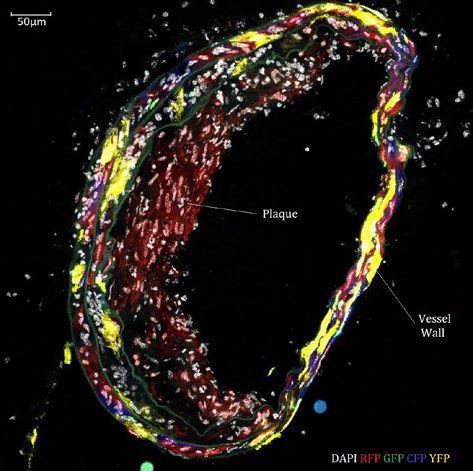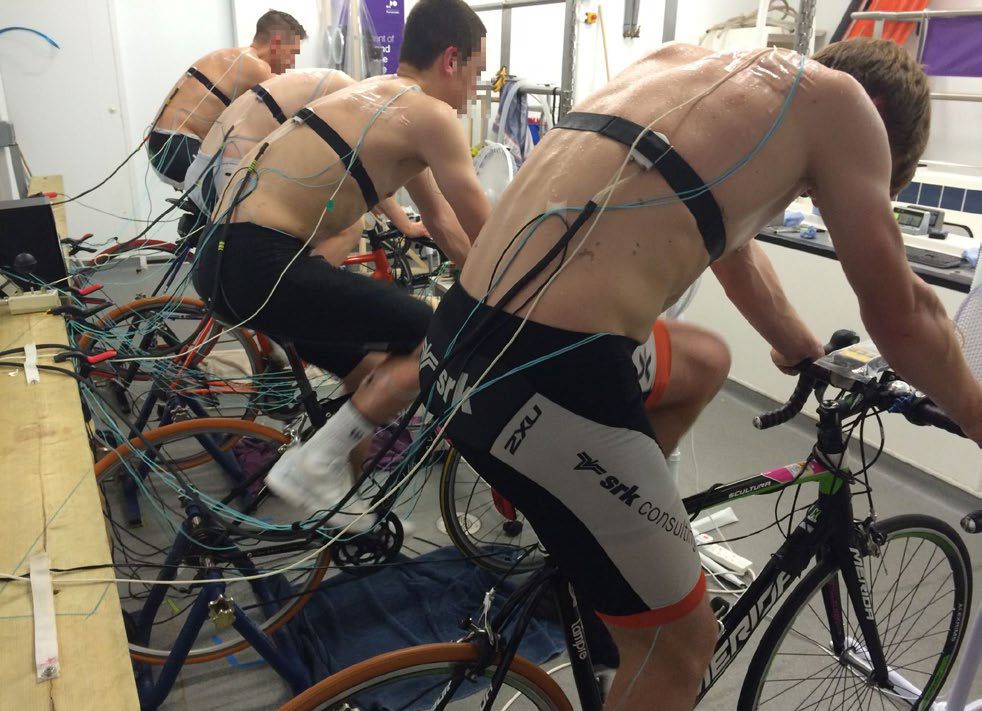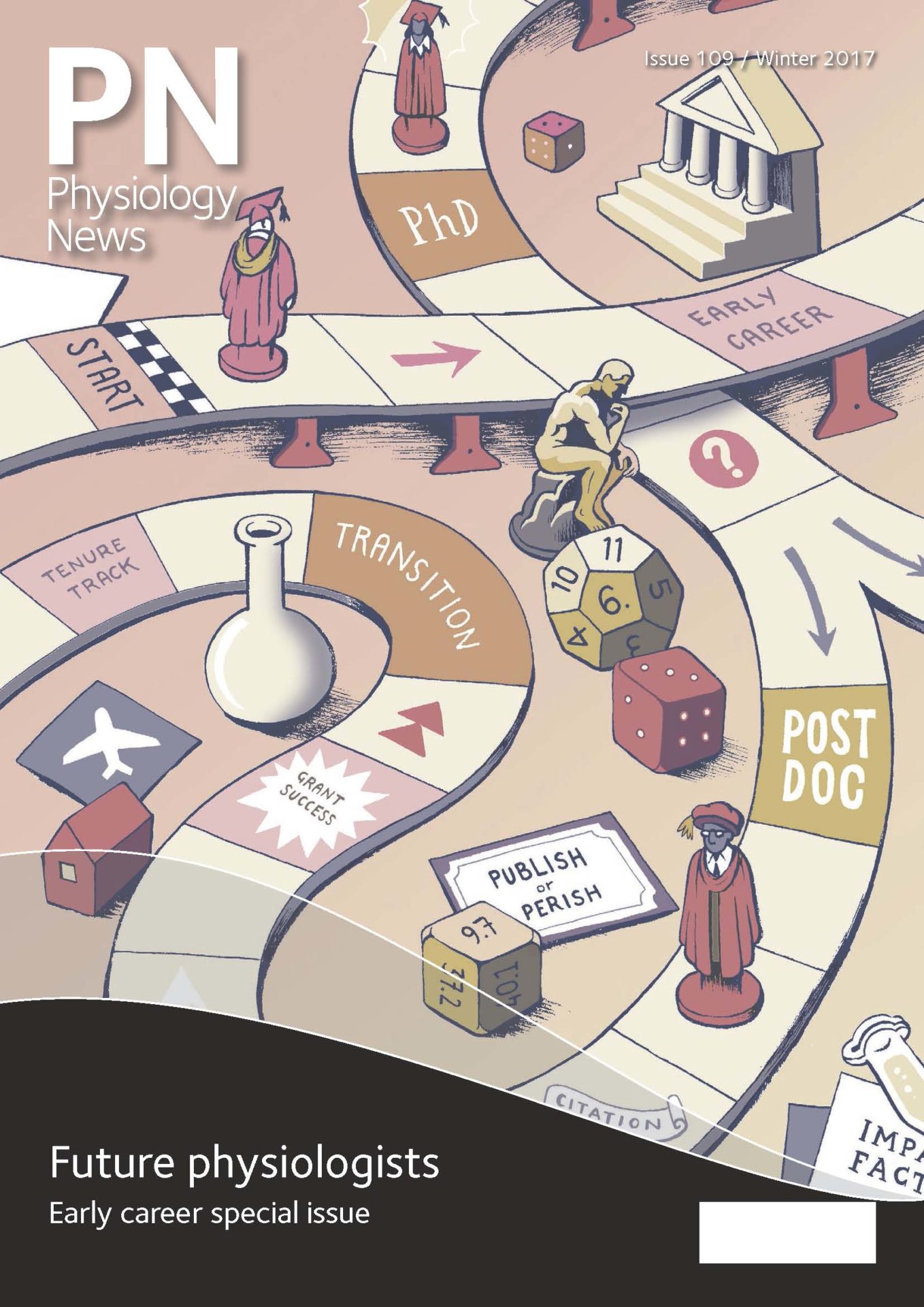
Physiology News Magazine
Annual General Meeting oral and poster competiton winners
Membership
Annual General Meeting oral and poster competiton winners
Membership
https://doi.org/10.36866/pn.109.38
Victoria Meah
Cardiff Metropolitan University

Winner, oral presentations
Mum’s heart: how does the heart change during pregnancy?
The mother’s body systems change significantly during pregnancy to accommodate for the developing baby. Compared with the non-pregnant state, a healthy pregnant woman’s heart changes in structure and function. The heart pumps harder and faster as a result of increased metabolic demand, increased blood volume, dilation of blood vessels around the body, elevated sympathetic activity and altered hormone levels.
Despite these apparently favourable changes, studies have shown reduced contractile function of the maternal heart in the second half of pregnancy. This suggests that the ability to pump blood around the body is reduced in healthy pregnant females, particularly during physical challenges, like aerobic exercise, that cause an increase in cardiac work. My PhD research has therefore investigated how the altered maternal cardiovascular system responds to light to moderate exercise. My findings have shown that healthy pregnant females in the late second trimester in fact have enhanced contraction of the heart, and are able to increase their pumping capacity during the additional challenge of exercise. It may be the case that women who develop cardiovascular complications are less able to adapt their cardiac function during physical challenge, whether that is pregnancy or exercise. Therefore, exercise could be used as a screening tool to identify these women at risk of pregnancy complications prior to the development of the disease.
Annabel Taylor
University of Cambridge

Runner-up, oral presentations Understanding the cause of clogged arteries
Vascular smooth muscle cells (VSMCs) are found in your blood vessels, where they regulate blood flow and blood pressure. However, during injury and inflammation, these cells lose the ability to contract and some instead begin to grow. This process allows for vessel repair, but when it malfunctions, it contributes to the formation of plaques on the wall of blood vessels, which can cause heart disease and stroke. In my research, I look at how individual VSMCs behave during plaque generation. To study this, we use a genetic model system called ‘Confetti’, which marks individual VSMCs randomly with one of four colours. Within the healthy vessel, VSMCs of all four Confetti colours are intermixed. In contrast, plaques have large regions of only one colour, demonstrating that the plaque is generated by expansion of a single VSMC. Currently, we are investigating how the cells which contribute to a plaque differ from those which do not. To explore this, we are using a new technique to compare gene expression of individual cells. In this way, we have identified many genes that are differentially expressed between plaque-susceptible and -resistant regions of the aorta, as well as between individual cells. We hypothesise that these genes mark or regulate the VSMCs which produce atherosclerotic plaques. We are now modelling this switch in gene expression in vitro, using Confetti VSMCs in a petri dish, to test the influence of these genes on individual cells. This research allows us to investigate the mechanisms behind selection of the cells that become plaques, and subsequent plaque development or treatment.

Rebecca Rendell
Bournemouth University

Winner, poster presentations
Double trouble: hypoxia and heat in athletic performance
In training, athletes use repeated exposure to hot and/or high-altitude environments, either outside or replicated in chambers or tents. Our understanding of the physiological adaptations to these environmental stressors, however, is limited to what happens when each occurs in isolation, not in combination. Therefore, this study examined i) the influence of overnight moderate hypoxia on the physiological adaptations to daily heat exposure (known as heat acclimation [HA]), and ii) whether HA (with and without combined hypoxic stress) affects endurance performance in a temperate, sea-level environment.
Eight trained males undertook two 11-day HA programmes with daily 90-minute exercise-heat exposures (40°C, 50% relative humidity [RH], core temperature = 38.5°C), once with overnight hypoxia (O2 equivalent to ~2400 m) and once without. In both conditions, HA was evident after 5 days, demonstrated by reduced core and mean skin temperature, heart rate and sweat sodium concentration; core temperature was further reduced after 10 days of exposure. Additionally, the fluid component of blood (plasma volume) and the concentration of red blood cell (RBC) stimulating hormone (plasma erythropoietin) increased following HA with no change in the total mass of haemoglobin in the RBCs. While endurance performance may be improved in temperate (22°C, 50% RH), normal-oxygen environments following HA (demonstrated by improved peak power output, lactate threshold and work done in a cycle time-trial), this was unaffected by an additional hypoxic stressor. Although these findings are mechanistically important, this observation is also practically relevant; athletes preparing for competition in a hot environment should not be concerned about concurrent exposure to a moderate-hypoxic stressor.

Sam Scott
Liverpool John Moores University

Runner-up, poster presentations Improving fitness by bringing the workout home
Many people fail to meet the physical activity guidelines, putting them at increased risk of metabolic diseases. This is largely due to barriers such as a lack of time, limited access to facilities and equipment, difficulty with transportation and inadequate financial resources. I investigated a novel home-based high-intensity interval training (HIT) programme designed to remove these barriers and improve the health of previously sedentary obese individuals. Thirty-two sedentary obese adults were allocated to one of three 12-week exercise training groups: home-based HIT (Home-HIT), laboratory-based HIT (Lab-HIT) or home-based moderate intensity continuous training (Home-MICT). Home-HIT consisted of simple bodyweight exercises (e.g. star-jumps, burpys, mountain-climbs) in an unsupervised place of the participant’s choosing. The Lab-HIT group attended the laboratory for supervised cycle training. Home-MICT performed 30-50 min continuous moderate intensity exercise (swimming, cycling or running). We monitored compliance and exercise intensity in the home groups using a heart rate monitor and mobile phone application that could be remotely monitored by the research team. We found high session completion rates in all three groups at the required exercise intensity (Home-HIT = 96%; Home-MICT = 88%; Lab-HIT = 97%). Home-HIT was comparably effective at increasing a range of physiological measures with Lab-HIT, including aerobic capacity, body fat percentage and blood vessel health, which are indicative of a lower cardiovascular disease risk. To conclude, this is the first study to successfully implement a Home-HIT training programme in previously sedentary obese individuals. Despite being unsupervised and having no encouragement, the Home-HIT group had high adherence rates at the prescribed exercise intensity, comparable with the fully supervised Lab-HIT group. Home-HIT appears effective at minimising many of the barriers to exercise, and may therefore represent an effective strategy to improve public health by increasing physical activity participation.
